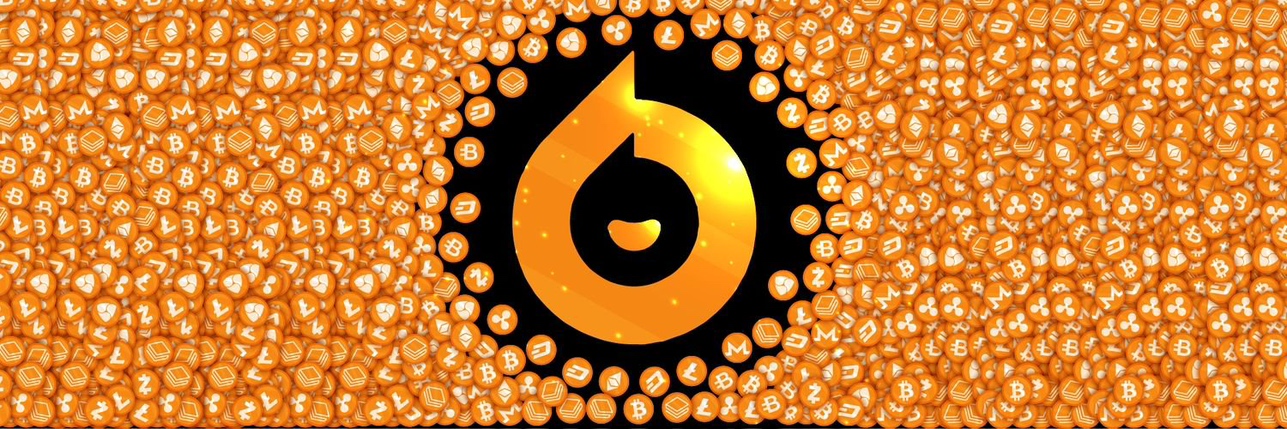Dutch bank ING reportedly plans to roll out Euro stablecoin
Europe’s MiCA regulation is opening up opportunities for major banks to enter the market, and one bank has already taken notice.
Dutch banking giant ING is reportedly preparing to enter the Euro stablecoin market. According to a report by CoinDesk on Tuesday, April 22, ING is setting up a consortium with several other banks to develop and launch a Euro-based stablecoin.
While ING declined to comment on the ongoing plans, CoinDesk cited two sources familiar with the matter who confirmed that the process is underway. However, the sources noted that progress has been slow as the group awaits regulatory approval to establish a joint entity.
ING is not the only European bank that entered the stablecoin market. For one, Société Générale’s subsidiary SG FORGE already launched its own Euro-backed stablecoin on Stellar.
The move hopes to take advantage of the European Union’s Markets in Crypto Assets regulation, which sets stringent rules for stablecoin issuance. Notably, the regulation drove out big competitors from the market, including the largest stablecoin issuer, Tether.
At the same time, the European Central Bank’s CBDC is still awaiting approval. This is opening up space for banks to offer private solutions to the EU’s fragmented payments network.
Although the ECB hopes to launch the Digital Euro by October this year, it has received some pushback from the European Commission. This is because member states are much more skeptical of a EU-wide CBDC.
Meanwhile, the U.S. is also catching up to the EU on regulation, as its STABLE Act is currently in the approval process. The planned act, which would regulate stablecoin issuance, is already attracting several players in the market.
This includes Visa, which is already experimenting with using stablecoins for card settlements. The Trump-linked World Liberty Financial has also launched its USD1 stablecoin , prompting criticism over potential conflicts of interest.
Paul Atkins Sworn in as 34th SEC Chair, Signals Crypto Market Reforms
In a significant regulatory development, Paul S. Atkins has been officially sworn in as the 34th Chairman of the U.S. Securities and Exchange Commission (SEC). A familiar face at the agency, Atkins returns at a pivotal moment, bringing his profound experience in financial markets and digital assets. His appointment under the President Donald Trump administration signals a possible shift in the SEC’s approach to innovation, capital formation, and cryptocurrency oversight.
Atkins’ appointment is not an abrupt decision. After Donald Trump took over the office on January 20, 2025, he nominated the ex-Commissioner to lead the agency. However, the confirmation process was delayed as the Senate required time to assess the financial condition of Atkins and his wife. Later, it provided its approval in a 52-44 vote earlier this month. Notably, even Gary Gensler, the ex-Chair of the SEC, took over the office in April, when he was nominated in January 2021.
During 2002-2008, when Atkins served as an SEC Commissioner, under President George W. Bush administration, he helped to promote transparency and cost-benefit analysis in regulation-making. He also led the SEC delegation to the President’s Working Group on Financial Markets and the U.S.-EU Transatlantic Economic Council meetings.
Later, in 2009, after moving out of the SEC, Atkins set up a consulting firm, Patomak Global Partners, where he focused on regulatory strategy and the best practices for developing the digital asset sector. Apart from that, Atkins served as an independent director and non-executive chairman for BATS Global Markets during 2012-2015. According to the official U.S. SEC press release, after the ceremony, Atkins said,
I am honored by the trust and confidence President Trump and the Senate have placed in me to lead the SEC. As I return to the SEC, I am pleased to join with my fellow commissioners and the agency’s dedicated professionals to advance its mission to facilitate capital formation; maintain fair, orderly, and efficient markets; and protect investors.
Following the appointment, Atkins will be succeeding the acting chair Mark Uyeda. Notably, under Uyeda’s administration, the Crypto Task Force was initiated in January 2025, aimed at improving industry engagement. Further, the SEC also dismissed several crypto-related enforcement actions, including Coinbase, Consensys, Gemini, and Uniswap.
Although the entry of Paul Atkins has garnered attention, the new SEC Chair now faces decisions on more than 70 crypto-related exchange-traded fund applications. Meanwhile, ETF analyst James Balchunas explained that the application ranges from “everything from XRP, Litecoin, and Solana to Penguins, Doge, and 2x Melania and everything in between.”
Related: Spotlight on XRP, Solana as 72 Crypto ETFs Seek SEC Approval This Year
With exposure in both traditional finance and the crypto space, Atkins is positioned to steer the SEC through a transformative period in market regulation, wherein the boundaries between conventional securities and digital innovation is weakening.
Disclaimer: The information presented in this article is for informational and educational purposes only. The article does not constitute financial advice or advice of any kind. Coin Edition is not responsible for any losses incurred as a result of the utilization of content, products, or services mentioned. Readers are advised to exercise caution before taking any action related to the company.
Urgent Warning: US Lawmaker Targets Puerto Rico Crypto Investors with Shocking Tax Bill
Are you a crypto investor enjoying the tax benefits of Puerto Rico? Hold on tight, because a shocking new bill from a U.S. lawmaker could drastically alter your financial landscape. Representative Nydia Velázquez has introduced the Fair Taxation of Digital Assets in Puerto Rico Act, and it’s sending ripples of concern throughout the crypto community. Let’s dive into what this means for you and your digital assets.
The heart of the matter is the Fair Taxation of Digital Assets in Puerto Rico Act. Introduced by U.S. Representative Nydia Velázquez, this bill directly targets the existing tax advantages that have made Puerto Rico a haven for crypto investors. Currently, individuals meeting certain residency requirements in Puerto Rico can benefit from significant tax exemptions, particularly on capital gains. This has attracted a wave of crypto enthusiasts and businesses to the island, boosting its economy and positioning it as a burgeoning crypto hub. However, this new legislation aims to change the game.
What does the bill propose?
For years, Puerto Rico has been promoted as a tax-friendly jurisdiction for investors, particularly under Act 60 (formerly Act 22 and Act 20). These acts offered substantial tax exemptions to new residents and businesses, leading to an influx of individuals from the mainland United States seeking to minimize their tax liabilities. The crypto sector was a significant beneficiary of this, with many crypto entrepreneurs and investors establishing residency in Puerto Rico. Now, this legislative move threatens to disrupt this ecosystem.
Nydia Velázquez is a highly influential member of the U.S. House of Representatives, representing New York’s 7th congressional district. Her introduction of this bill signals a growing scrutiny of crypto tax havens within the U.S. territories and potentially broader implications for US crypto regulation.
Why is Velázquez focusing on Puerto Rico?
Velázquez’s involvement adds significant weight to this legislative effort. As a senior member of Congress, her initiatives often garner considerable attention and support. This bill is not just a minor adjustment; it’s a clear signal that lawmakers are paying close attention to how crypto wealth is being taxed (or not taxed) and are prepared to take action.
The potential enactment of the Fair Taxation of Digital Assets in Puerto Rico Act has significant implications for Puerto Rico crypto investors. Let’s break down the key areas of impact:
For those who have made Puerto Rico their home primarily for tax optimization on their crypto holdings, this bill presents a serious challenge. The financial calculus that made Puerto Rico so appealing could be fundamentally altered, forcing investors to reconsider their residency and investment strategies.
If the Fair Taxation of Digital Assets in Puerto Rico Act becomes law, Puerto Rico crypto investors will need to adapt quickly. Here are some key considerations and actionable insights:
The introduction of this bill underscores the evolving global landscape of digital asset tax and regulation. Crypto investors must be proactive in understanding and adapting to these changes to ensure compliance and optimize their financial outcomes.
The future of crypto in Puerto Rico and the broader landscape of crypto tax regulations are uncertain, but this bill signals a clear direction. It’s becoming increasingly evident that tax havens, even within U.S. territories, are facing increased scrutiny. Governments worldwide are seeking to capture tax revenue from the burgeoning crypto economy, and the days of lightly regulated or untaxed crypto gains may be numbered.
Looking Ahead:
The situation in Puerto Rico serves as a critical case study. It highlights the tension between attracting investment through tax incentives and ensuring tax fairness and revenue collection. As the crypto industry matures, navigating the complexities of global tax regulations will be a key challenge for investors and businesses alike.
In conclusion, the Fair Taxation of Digital Assets in Puerto Rico Act is a critical development for crypto investors. It represents a potential paradigm shift in how digital assets are taxed in Puerto Rico and possibly sets a precedent for broader US crypto regulation. Staying informed, seeking expert advice, and adapting proactively are essential steps for anyone involved in the crypto space in Puerto Rico and beyond.
To learn more about the latest crypto tax updates and regulatory trends, explore our article on key developments shaping crypto regulation globally.
Disclaimer: The information provided is not trading advice, Bitcoinworld.co.in holds no liability for any investments made based on the information provided on this page. We strongly recommend independent research and/or consultation with a qualified professional before making any investment decisions.



 最低價
最低價 最高價
最高價 








































